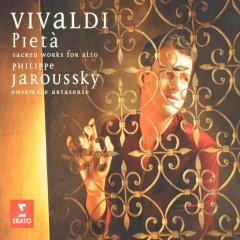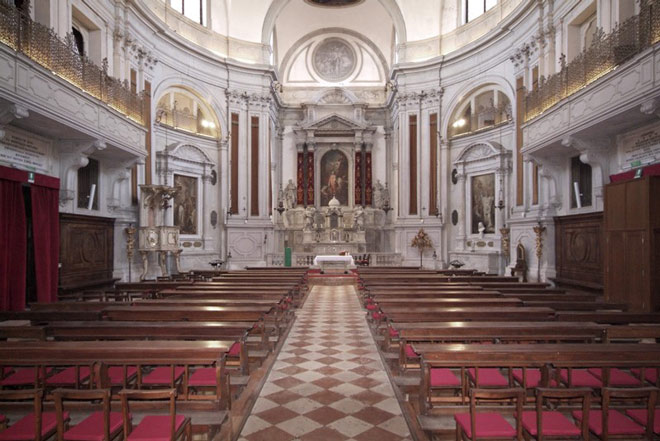Cheat downhill pelangi. Shortly after Vivaldi's appointment, the orphans began to gain appreciation and esteem abroad, too. Vivaldi wrote concertos, cantatas and sacred vocal music for them. These sacred works, which number over 60, are varied: they included solo motets and large-scale choral works for soloists, double chorus, and orchestra. The Gloria in D is probably one of his best known sacred works, but it also reflects Vivaldi’s other skill as an opera composer, which he regarded as a distraction from his day job at the Pieta. Venice in the early 18th century was the pleasure centre of Europe, and a visit.
A quartet of violin concertos, this composition includes one work in three movements for each season of the year: Spring, Summer, Fall, Winter. Perhaps the most famous of these is 'Spring.' Scroll down to the text entry and click on a video of Itzhak Perlman playing first violin in a performance of this piece. Notice that there is no conductor; Perlman is directing the string orchestra with his bow and body language, this mode of conducting was the common practice during Vivaldi's life time. Notice how the second violin echos the themes played by Perlman. Listen for the ways the solo violins imitate nature sounds, especially birds. Listen for the sound of running water played by the orchestra 1:12 minutes into the piece. In addition to the strings is an essential part of the orchestration; the basso continuo, played here on a virginal (a keyboard instrument that was a precusor to the piano.) You will hear some of the same themes repeated many times, this is typical of the form (ritornello form) in which this composition is written. http://youtu.be/TKthRw4KjEg

Vivaldi Pieta Sacred Works For Alto
Vivaldi's Gloria is one of sacred music's most uplifting choral works - a piece of high drama and hidden performers
Some time ago, I eagerly began a holiday in Venice, desperate to follow in Vivaldi’s footsteps. Imagine my disappointment when I got to the famous orphanage turned music school where he worked - the Ospedale della Pieta - only to discover it had been turned into an hotel. I shouldn’t have been surprised. The Riva degli Schiavoni bordering the Canale di San Marco is now prime Venetian real estate, thronging with tourists and souvenir sellers. I hoped for better luck with the Ospedale’s church - the Santa Maria della Pieta - next door. But that was boarded up with graffiti scrawled over the double doors. I didn’t feel too let down, though, since the present church was built after Vivaldi’s death in 1741! It’s still known as Vivaldi’s church, and I’m told that it is now cleaned up, open for worship and home to some wonderful baroque concerts.
I wanted to imagine myself in the place where some of Vivaldi’s most glorious music was performed by the young women who were taken in as orphans by the Ospedale, one of four important Venetian orphanages which placed a special emphasis on teaching music. These ‘orphans’ were usually the illegitimate daughters of the city’s wealthy noblemen and their numerous mistresses, which explains the generous endowments that meant the girls were well cared for and given the best musical tuition available. Despite being ordained as a priest in 1703, Vivaldi was appointed the violin master at the Ospedale and his association with the music school lasted until 1740, by which time his reputation in Europe had been secured thanks largely to the wonderful performances of the girls he instructed.
Vivaldi Ospedale Della Pieta
The Gloria in D is probably one of his best known sacred works, but it also reflects Vivaldi’s other skill as an opera composer, which he regarded as a distraction from his day job at the Pieta. Venice in the early 18th century was the pleasure centre of Europe, and a visit to the opera was part of the court and social life of the city. Despite a licentious reputation, the opera houses were required to close for all important religious festivals and Saint’s Days. But Venetians and their visitors still wanted to be entertained. Vivaldi’s all-women orchestras and choirs were legendary sensations, but the girls needed to be protected from noblemen and travellers to the city. To keep them sheltered from the corruption and decadence of the visiting public, the girls sang from the upper galleries of the church, hidden behind the patterened grills, which only added to the theatrical sense of drama matched by Vivaldi’s music. Those young men in Venice for a stop on the Grand Tour flocked to Vivaldi’s church to hear these mysterious women seen only in silhouette, but sounding like angels.
The Gloria itself is a joyful hymn of praise and worship divided into 12 relatively brief movements, ranging from festive brilliance to profound sadness. Yet it’s a mark of Vivaldi’s skill that the work overall maintains a cohesive structure. He prepares us from the very beginning, with the distinctive opening chorus, yet within minutes we’re deep in meditation with the second poignant movement ‘Et in terra pax hominibus’. From lilting soprano solos to solemn choral singing with duets and four part harmonies, this really is a masterclass in choral writing. Adobe indesign cc 2020 portable. But Vivaldi, always the great instrumentalist, doesn’t forget his musicians. There are opportunities for tender, lovely countermelodies played variously by the violin or the oboe.
La Pieta Music

The finale brings the work together in a vivid but effective composite of all we’re heard before. Vivaldi has thrown in music which feels part concerto, part opera - but the effect is one of sacred music’s most uplifting choral works.
